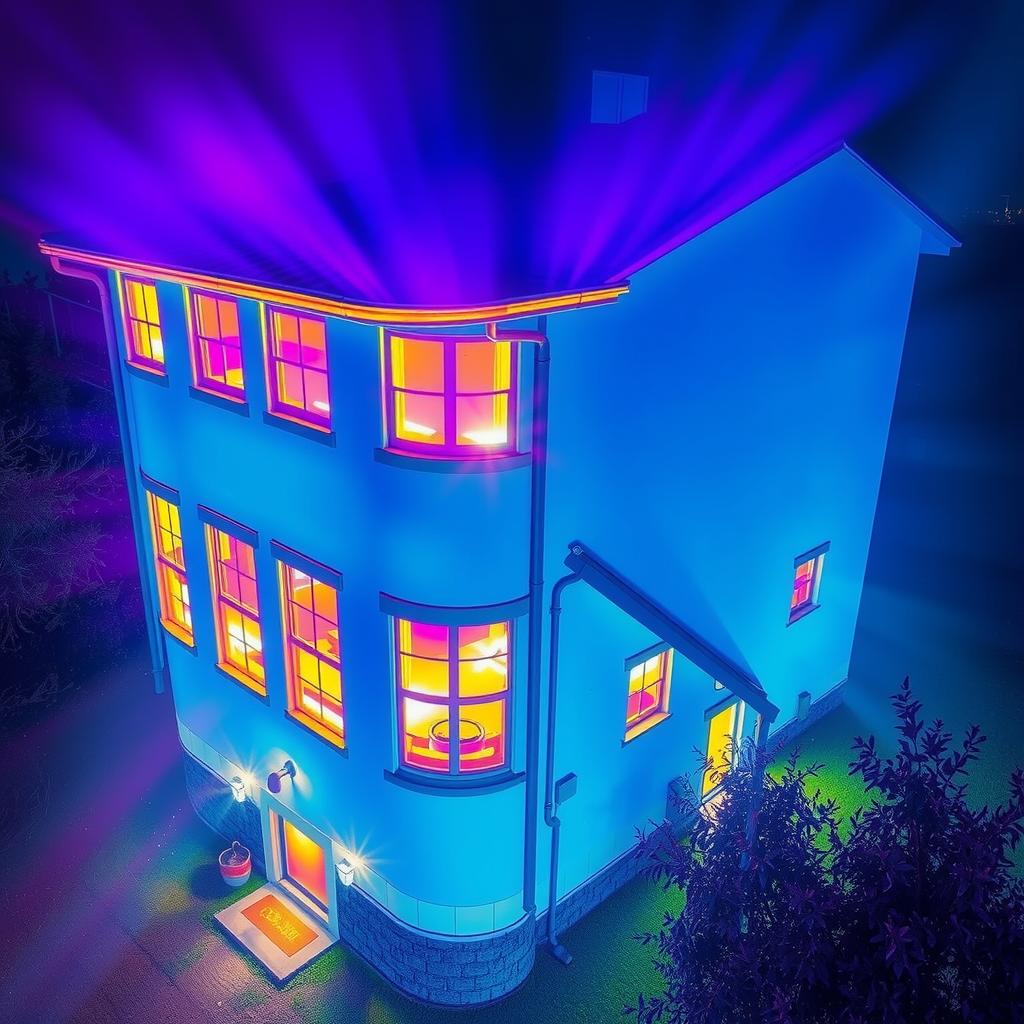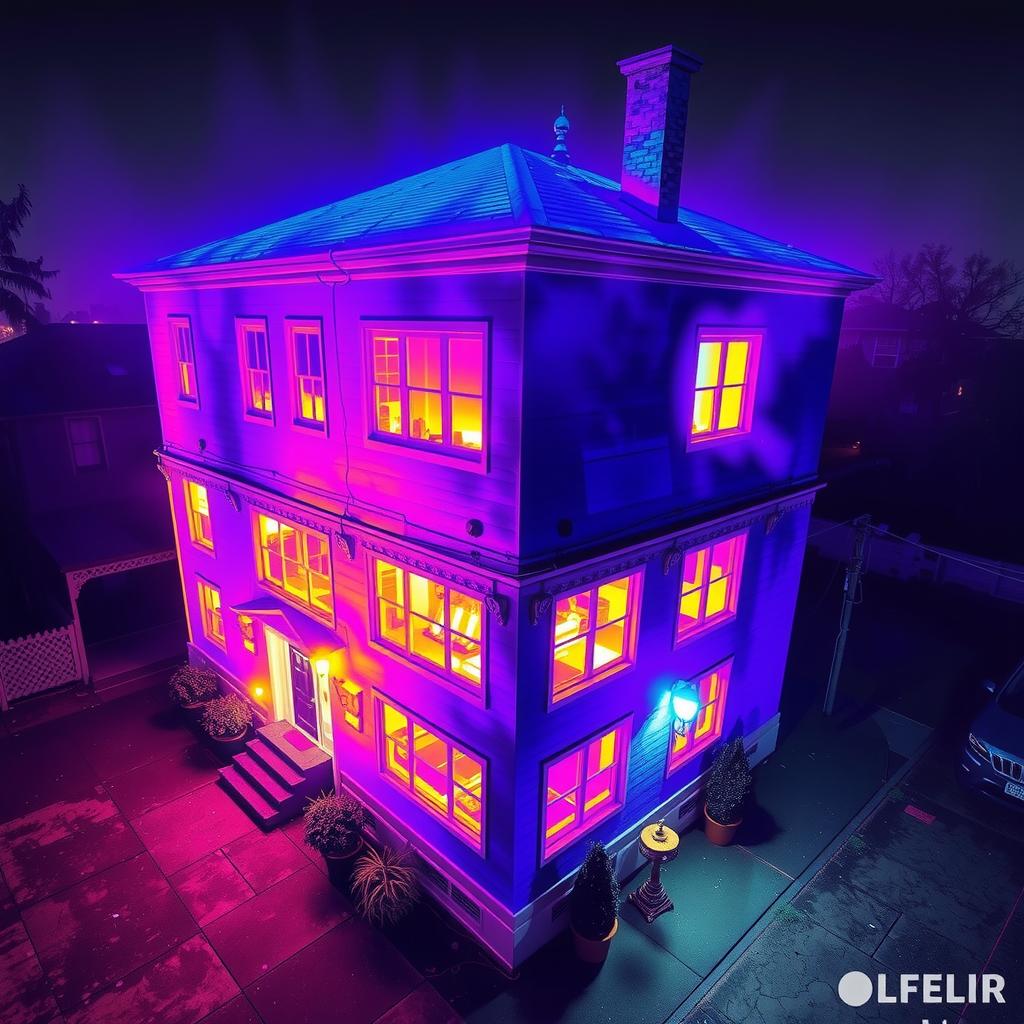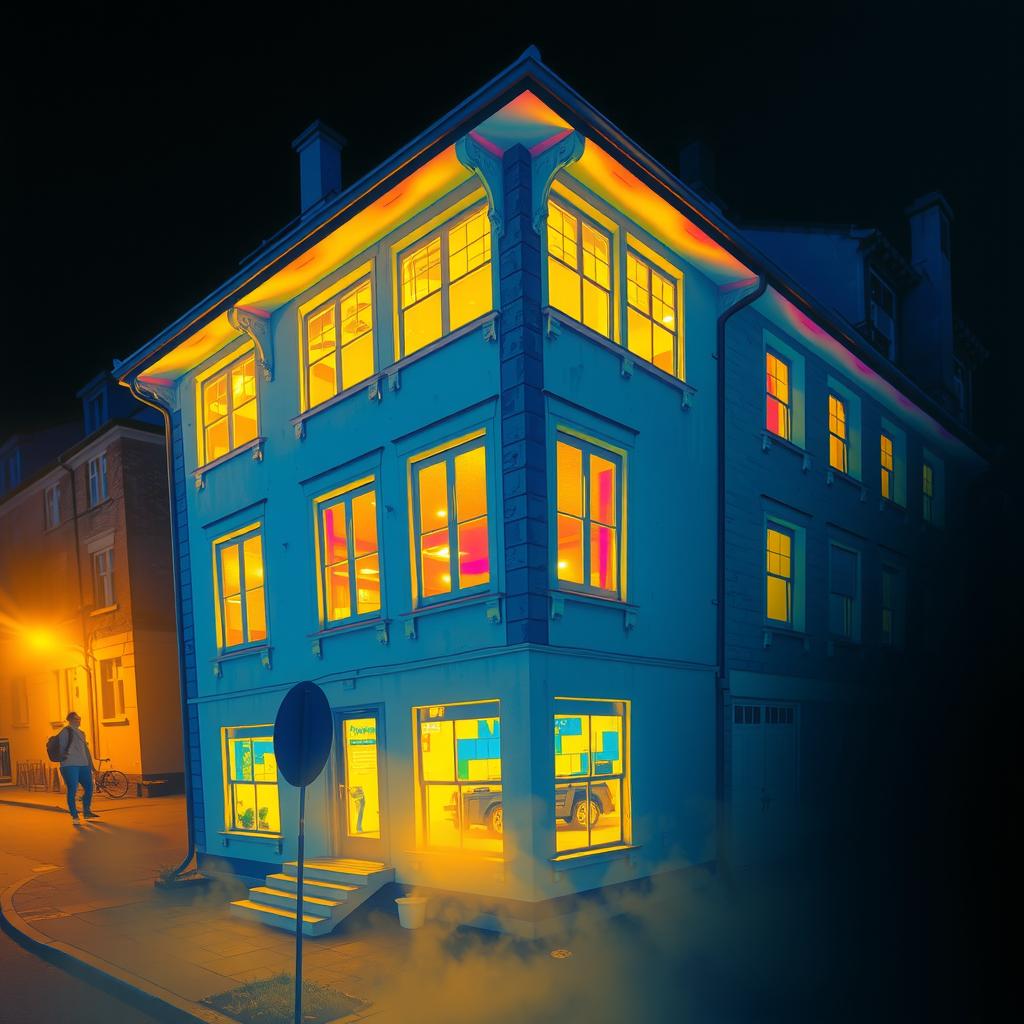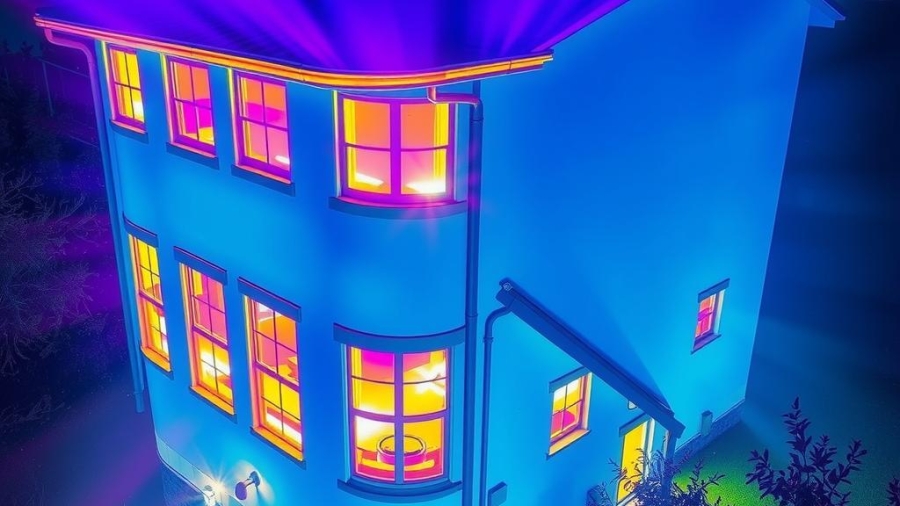In an era where energy efficiency is not just a buzzword but a necessity, the challenge of heat loss in buildings has become increasingly pressing. Homeowners and property managers alike face the daunting task of identifying hidden sources of inefficiency that can lead to soaring energy bills and uncomfortable living conditions. Traditional methods of inspecting buildings often fall short, leaving occupants unaware of critical insulation issues that compromise their comfort and wallet. This is where modern technology steps in to provide clarity: enter the world of thermal imaging.
Utilizing advanced thermal analysis techniques, professionals now have access to tools that reveal temperature variations across surfaces with remarkable precision. By deploying an infrared camera, they can visually map out areas where heat is escaping—a feat unattainable through conventional inspection methods. The ability to conduct effective temperature measurement without invasive procedures enables timely identification and rectification of potential problems before they escalate into costly repairs or lost energy savings.
The core value this blog post offers lies in enlightening readers about the unparalleled advantages offered by thermal imaging cameras for resolving issues related to heat detection. As we delve deeper into how these devices function, it becomes apparent that their application goes beyond mere diagnostics; they are essential instruments for promoting sustainable practices within building management. Whether you are a homeowner looking to improve your space’s efficiency or a professional involved in building inspections, understanding how infrared technologies work will empower you with knowledge on optimizing both comfort and cost-effectiveness.
As this discussion unfolds, readers will uncover practical insights on using thermal imaging as a proactive approach toward enhancing overall energy performance while simultaneously addressing common insulation-related challenges. With each subsequent section revealing more about how these innovative solutions operate within real-world scenarios, one cannot help but feel compelled to explore further—what other secrets might be uncovered through the lens of a thermal camera?

Essential Insights:
-
Critical Role of Thermal Imaging in Energy Efficiency: In today’s energy-conscious environment, the significance of addressing heat loss cannot be overstated. Many buildings experience unseen energy waste due to inadequate insulation or air leaks. Utilizing thermal imaging, professionals can visually detect these inefficiencies early on, preventing escalated costs and unnecessary environmental impact.
-
Precision through Infrared Camera Technology: The application of advanced infrared camera technology revolutionizes traditional building inspections. This method enables precise temperature measurement, highlighting temperature discrepancies that indicate potential insulation issues. By identifying areas where heat escapes, property owners are empowered to take proactive measures that enhance their homes’ performance and comfort levels.
-
Immediate Visual Feedback for Proactive Maintenance: One of the remarkable advantages of thermal analysis is its ability to provide immediate visual feedback regarding temperature variations within structures. This capability allows inspectors to quickly pinpoint trouble spots during routine evaluations or when addressing client concerns about rising utility bills linked to unseen drafts or poor insulation quality. Incorporating such innovative solutions into regular assessments not only enhances a building’s long-term sustainability but also promotes more informed investment decisions in property improvements aimed at enhancing overall energy efficiency.

Understanding Thermal Imaging: The Science Behind Heat Detection
Unveiling the Principles of Thermal Imaging Technology
Thermal imaging technology has emerged as a crucial tool in identifying energy inefficiencies within buildings, leveraging the science of heat detection. This innovative method utilizes infrared cameras to capture thermal radiation emitted by objects, enabling precise temperature measurement across various surfaces. By analyzing these temperature variations, professionals can easily detect areas where heat loss occurs—often indicative of underlying insulation issues. For instance, during a building inspection, an infrared camera can reveal cold spots around windows and doors that might otherwise go unnoticed through conventional visual assessments. These discrepancies not only highlight potential problems but also offer insights into how effectively a structure retains or loses heat.
In practical applications, conducting a thermal analysis allows property owners to address energy efficiency proactively rather than reactively. As energy costs continue to rise globally, understanding where heat escapes can lead to significant savings on heating bills and improved comfort levels indoors. Furthermore, the integration of thermal imaging in routine inspections promotes sustainability efforts; by optimizing insulation and minimizing unnecessary energy consumption, buildings contribute positively to environmental conservation.
The importance of this technology extends beyond mere cost-saving measures—it is instrumental in ensuring structural integrity over time. Buildings that experience excessive heat loss may suffer from moisture accumulation or mold growth due to temperature fluctuations inside wall cavities or attics. By employing thermal imaging techniques early on during renovations or new constructions, stakeholders can mitigate long-term damage while enhancing overall safety standards.
Moreover, the data obtained from such inspections serves not just immediate purposes but also contributes valuable information for future planning and maintenance strategies. With detailed reports generated from thermal analysis sessions depicting specific areas requiring attention—be it re-insulation work or upgrades in HVAC systems—the decision-making process becomes more informed and efficient.
In conclusion, embracing the capabilities offered by thermal imaging technology provides users with an unmatched advantage when it comes to achieving optimal energy performance in buildings today. As awareness surrounding climate change grows and initiatives toward eco-friendliness become paramount considerations for construction practices worldwide—integrating advanced tools like infrared cameras will undoubtedly play an essential role moving forward towards sustainable living environments.

Understanding the Role of Thermal Imaging in Energy Efficiency
An Innovative Approach to Identify Heat Loss
Thermal imaging has emerged as a pivotal tool in enhancing energy efficiency across various sectors, particularly in building inspection and maintenance. By utilizing an infrared camera, professionals can conduct thermal analysis that effectively identifies heat loss within structures. This advanced technology enables the detection of insulation issues that may otherwise go unnoticed, leading to wasted energy and elevated utility costs. When heat escapes through poorly insulated walls or roofs, it not only diminishes comfort for occupants but also contributes significantly to increased energy consumption. Through precise temperature measurement conducted via thermal imaging, property managers can pinpoint specific areas where intervention is necessary. This proactive approach not only facilitates immediate repair efforts but also fosters long-term sustainability by promoting efficient resource use.
Proactive Maintenance: A Key Benefit of Thermal Imaging
The Long-Term Impact on Sustainability
One significant advantage of thermal imaging lies in its ability to promote proactive maintenance strategies within facilities management. By regularly conducting thermal inspections, organizations can monitor temperature fluctuations indicative of potential problems before they escalate into costly repairs or replacements. For instance, identifying early signs of moisture intrusion or faulty electrical components allows for timely interventions that extend the lifespan of critical systems and reduce overall operational costs. Furthermore, these measures contribute directly to sustainability goals by minimizing waste associated with premature equipment failure and unnecessary resource expenditure. As highlighted by industry experts, “Investing in preventive measures such as regular thermal inspections leads to significant savings while aligning with environmental stewardship.” Thus, integrating thermal analysis into routine maintenance schedules enhances both economic viability and ecological responsibility.
Enhancing Building Performance through Infrared Technology
The Future of Energy Management Solutions
The integration of infrared technology into energy management solutions represents a forward-thinking approach toward optimizing building performance. With increasing awareness around climate change and sustainable practices, leveraging tools like thermal imaging provides organizations with actionable insights essential for reducing their carbon footprint. Business owners can utilize this data-driven technique not only for evaluating current conditions but also for planning future upgrades regarding building envelope improvements or HVAC enhancements aimed at maximizing efficiency levels.
In fact, many architects now incorporate thermographic assessments during the design phase itself—ensuring new constructions are equipped from the outset with effective insulation strategies informed by comprehensive heat detection capabilities offered through infrared cameras.
Cost Savings Associated with Improved Energy Efficiency
Financial Implications Beyond Initial Investments
While some may perceive investing in advanced technologies such as thermal imaging cameras as cost-prohibitive initially; however,
the long-term financial implications often reveal substantial savings over time when considering reduced energy bills alone.
By addressing identified insulation issues promptly after thorough evaluation using infrared methods—organizations frequently witness reductions exceeding 30% on monthly heating/cooling expenses depending upon severity/extent discovered during audits.
Moreover,it opens avenues towards incentives provided by local governments encouraging retrofitting initiatives which further amplify ROI opportunities available alongside enhanced property values resulting from improved overall conditions showcased prominently throughout real estate markets today—the benefits cascade beyond mere compliance metrics! Ultimately,fostering an environment wherein stakeholders prioritize sustainable operations articulates commitment towards responsible practices while engendering trust amongst consumers who increasingly favor eco-conscious brands.
Transforming Building Assessments with Thermal Imaging
In recent years, the integration of thermal imaging technology into property management has emerged as a significant advancement in conducting building inspections. The ability to visualize and measure temperature variations using an infrared camera allows property managers to identify hidden issues such as insulation problems, moisture intrusion, and electrical faults that may not be visible during traditional inspection methods. This revolutionary approach enhances the accuracy of assessments while providing deeper insights into a property’s overall condition. By utilizing thermal analysis, inspectors can pinpoint areas of heat loss, which directly correlates with energy efficiency and operational costs for building owners.
The value proposition of implementing thermal imaging extends beyond immediate problem detection; it serves as a critical tool for long-term investment decisions. When potential buyers or investors evaluate properties, having detailed reports generated from thermal inspections can highlight any existing or potential insulation issues that could affect their bottom line. For instance, if an inspection reveals excessive heat loss through poorly insulated walls or roofs, prospective owners are better informed about future renovation costs they might incur. Furthermore, these informative visuals facilitate negotiations by providing hard evidence regarding a property’s maintenance needs.
Moreover, regular use of thermal imaging during routine assessments promotes proactive maintenance strategies rather than reactive ones. By routinely measuring temperature fluctuations across various building components—such as windows and HVAC systems—property managers can implement timely repairs before minor issues escalate into costly overhauls. This proactive stance not only extends the lifespan of critical systems but also significantly improves tenant satisfaction by ensuring comfort through consistent climate control.
Additionally, adopting this modern technique aids in compliance with increasingly stringent regulations surrounding energy efficiency standards within commercial real estate portfolios. Using advanced technologies like infrared thermography demonstrates due diligence towards maintaining sustainable practices while potentially qualifying properties for green certifications that add market value.
As property management continues to evolve in response to technological advancements and consumer expectations for transparency and sustainability, incorporating tools like thermal imaging is no longer just beneficial—it is essential for effective risk assessment and strategic planning in real estate investments.
Enhancing Inspection Accuracy Through Infrared Technology
Thermal imaging represents more than just an upgrade in traditional inspection methodologies; it signifies a profound shift toward precision-driven evaluations within property management sectors. Utilizing this innovative technology enables professionals to conduct thorough analyses without causing disruption to tenants or compromising ongoing operations within buildings under review. The ability to detect anomalies via non-invasive means minimizes downtime associated with conventional methods requiring extensive physical examinations.
Property managers equipped with knowledge on how best to interpret findings from infrared cameras gain invaluable insights into their facilities’ performance metrics over time—a key component when assessing both current conditions and forecasting future maintenance needs based on historical data trends derived from previous scans conducted at set intervals throughout each year’s cycle.
When conducting thorough assessments using state-of-the-art equipment designed specifically for capturing minute changes in surface temperatures associated with various materials commonly found throughout residential/commercial properties alike (e.g., brick facades), professionals elevate their credibility amongst industry peers while ultimately achieving superior results compared against outdated techniques reliant solely upon visual checks alone lacking context-specific analytics provided through sophisticated software applications accompanying modern infrared solutions available today!
This strategy fosters enhanced collaboration between stakeholders involved—from contractors executing repair tasks identified via these diagnostics all the way up executive teams making high-stakes decisions regarding capital expenditures tied directly back improved operational efficiencies gleaned thereafter! As such integrating comprehensive approaches rooted firmly around leveraging advanced technological capabilities becomes paramount prioritizing optimal outcomes realized across diverse asset classes served under umbrella professional responsibilities held collectively among members engaged actively pursuing excellence every step along journey navigating complex landscape characterized ever-evolving demands placed contemporary marketplace!
A Strategic Investment Tool: Cost Savings Through Proactive Maintenance
Investing in thermal imaging services translates not only into tangible cost savings but also positions organizations favorably amid rising competition prevalent across global markets today seeking differentiation points distinguishing themselves amidst crowded spaces filled myriad players vying attention clients aiming maximize returns investment portfolios entrusted them stewardship closely monitored regularly evaluated meticulous scrutiny applied consistently maintaining highest levels accountability integrity upheld throughout entire process engagement executed seamlessly orchestrated involving multiple parties working collaboratively towards shared vision aligned mutual goals established together upfront clearly defined agreed upon beforehand ensuring everyone remains focused respective roles responsibilities delineated transparently outlined clear objectives pursued diligently relentlessly striving achieve desired outcomes hoped achieved collectively reflecting core values foundational principles guiding actions taken daily basis underpinning relationships built trust fostered mutual respect cultivated organically nurtured developed overtime formed personal connections forged lasting impacts lives touched positively aided growth nurtured strengthened community ties fostering goodwill extending far beyond transactional exchanges mere financial considerations influencing behavior choices made driving actions undertaken shaping identities formed continuously evolving adapting changing environments faced inevitably embracing challenges overcome creatively innovatively harnessing power partnership synergy generated combined efforts directed purposeful intent aimed achieving success worthwhile pursuits embarked fulfilling aspirations dreams cherished passions igniting fire enthusiasm passion inspire others join cause rally support lead charge boldly forward navigate uncharted territories discovering new horizons await beckoning exploration discovery unveiling possibilities previously overlooked unlocking untapped potentials residing dormant waiting patiently unleashed unleashed unleashed unleashing transformative forces capable reshaping realities lived experienced ultimately redefining narratives woven intricately fabric experiences shared together harmoniously reson
Frequently Asked Questions:
Q: How do thermal imaging cameras help detect heat loss in buildings?
A: Thermal imaging cameras utilize advanced infrared technology to measure temperature variations across surfaces. By capturing these discrepancies, professionals can pinpoint areas where heat escapes, allowing them to identify potential insulation issues before they become significant problems.
Q: What are the benefits of using thermal analysis for energy efficiency assessments?
A: Incorporating thermal analysis into energy efficiency inspections offers immediate visual feedback on temperature fluctuations within a structure. This method not only aids in diagnosing existing issues but also serves as a proactive approach to prevent future problems, ultimately enhancing overall building performance and comfort levels while reducing unnecessary energy expenditure.
Q: Can thermal imaging assist with preventive maintenance in older buildings?
A: Yes, utilizing an infrared camera during routine inspections of older buildings can reveal hidden drafts and inadequate insulation that homeowners might otherwise overlook. By identifying these underlying concerns early on through effective heat detection, property owners can make informed decisions about necessary improvements, contributing to long-term sustainability and reduced utility costs.
